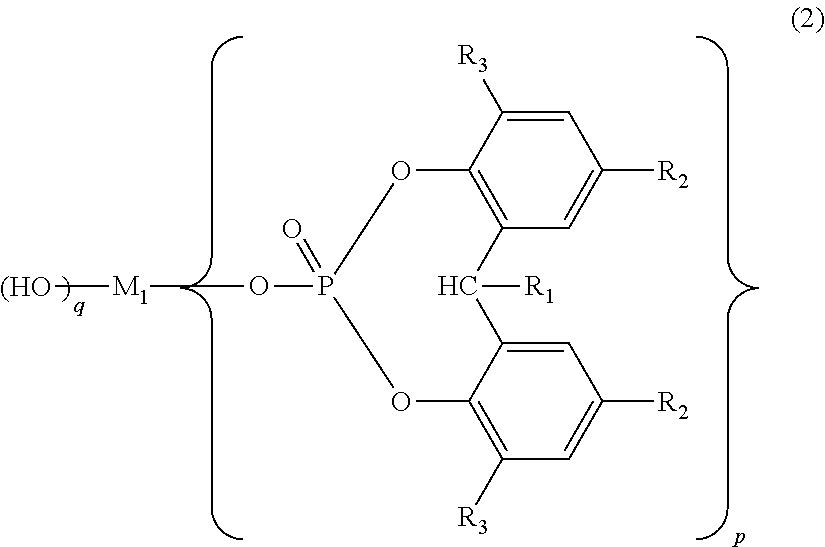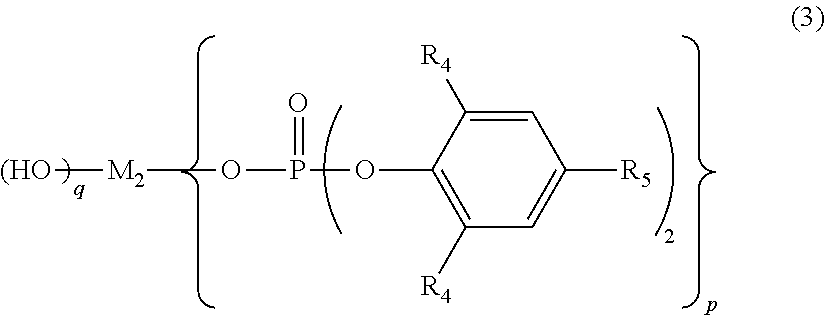Polylactic acid composition and molded article thereof
a polylactic acid and composition technology, applied in the field of polylactic acid composition and molded article thereof, can solve the problems of poor heat stability, limited heat resistance, difficult to form stereocomplex polylactic acid, etc., and achieve excellent heat stability and excellent heat stability
- Summary
- Abstract
- Description
- Claims
- Application Information
AI Technical Summary
Benefits of technology
Problems solved by technology
Method used
Image
Examples
production example 1
Component A-α-1, Poly-L-Lactic Acid (PLLA)
[0317]100 parts by weight of L-lactide (manufactured by Musashino Kagaku Kenkyusho Co., Ltd., optical purity of 100%) and 0.15 part by weight of stearyl alcohol were fed to a polymerization reactor having a cooling distillation tube from a raw material feed port in a nitrogen gas stream. Subsequently, the inside of the reactor was substituted by nitrogen 5 times, and L-lactide was molten at 190° C. When L-lactide was molten completely, 500 μL of a toluene solution containing 0.005 part by weight of tin octylate was added so as to carry out polymerization at 190° C. for 1 hour. After the end of polymerization, 0.082 part by weight of ethyl di-n-hexylphosphonoacetate (DHPA) was added from the raw material feed port and kneaded for 15 minutes. Finally, excess L-lactide was volatilized, and the polymer was discharged from the reactor and cut into a chip to obtain poly-L-lactic acid (PLLA).
[0318]The obtained poly-L-lactic acid had a weight averag...
production example 2
Component A-α-2, Poly-D-Lactic Acid (PDLA)
[0319]The operation of Production Example 1 was repeated except that D-lactide (manufactured by Musashino Kagaku Kenkyusho Co., Ltd., optical purity of 100%) was used in place of L-lactide of Production Example 1 to obtain poly-D-lactic acid (PDLA). The obtained poly-D-lactic acid had a weight average molecular weight of 152,000, a glass transition point (Tg) of 55° C., a melting peak temperature (Tmh) of 177° C. and a carboxyl group content of 14 eq / ton. The enantiomer average chain length could not be calculated as no syndiotactic sequences could be measured.
production example 3-1
Component A-α-3-1, Stereocomplex Polylactic Acid-1 (scPLA-1)
[0320]100 parts by weight of polylactic acid consisting of 50 parts by weight of PLLA and 50 parts by weight of PDLA obtained in Production Examples 1 and 2 and 0.1 part by weight of sodium 2,2′-methylenebis(4,6-di-tert-butylphenyl) phosphate (Adecastab NA-11: ADEKA Corporation) were mixed together by means of a blender, and the resulting mixture was dried at 110° C. for 5 hours and supplied into the TEX30XSST 30 mmφ vented double-screw extruder of The Japan Steel Works, Ltd. to be melt extruded into a pellet at a cylinder temperature of 250° C., a screw revolution of 250 rpm, a discharge rate of 9 kg / h and a vent vacuum degree of 3 kPA so as to obtain stereocomplex polylactic acid-1. The obtained stereocomplex polylactic acid-1 had a weight average molecular weight of 131,000, a glass transition point (Tg) of 58° C., a complex-phase polylactic acid crystal melting peak temperature (Tms) of 221° C., a carboxyl group content...
PUM
| Property | Measurement | Unit |
|---|---|---|
| mol % | aaaaa | aaaaa |
| temperature | aaaaa | aaaaa |
| crystal melting temperature | aaaaa | aaaaa |
Abstract
Description
Claims
Application Information
 Login to View More
Login to View More - R&D
- Intellectual Property
- Life Sciences
- Materials
- Tech Scout
- Unparalleled Data Quality
- Higher Quality Content
- 60% Fewer Hallucinations
Browse by: Latest US Patents, China's latest patents, Technical Efficacy Thesaurus, Application Domain, Technology Topic, Popular Technical Reports.
© 2025 PatSnap. All rights reserved.Legal|Privacy policy|Modern Slavery Act Transparency Statement|Sitemap|About US| Contact US: help@patsnap.com



